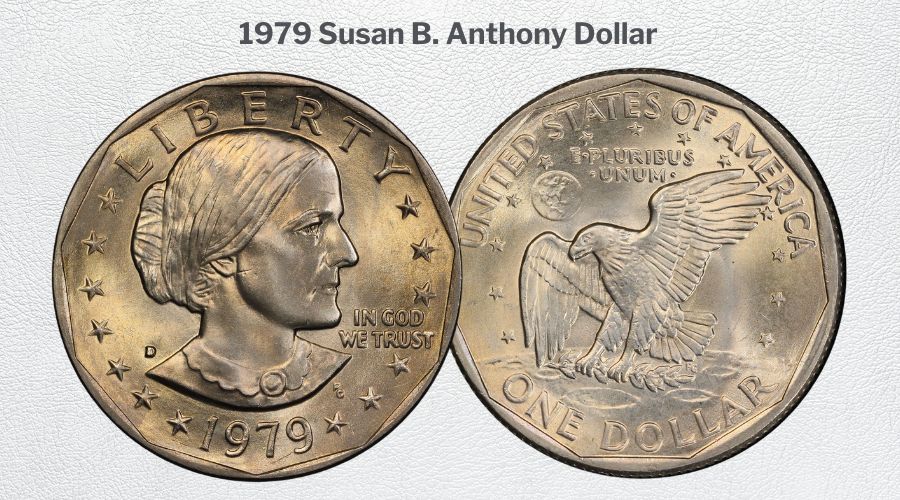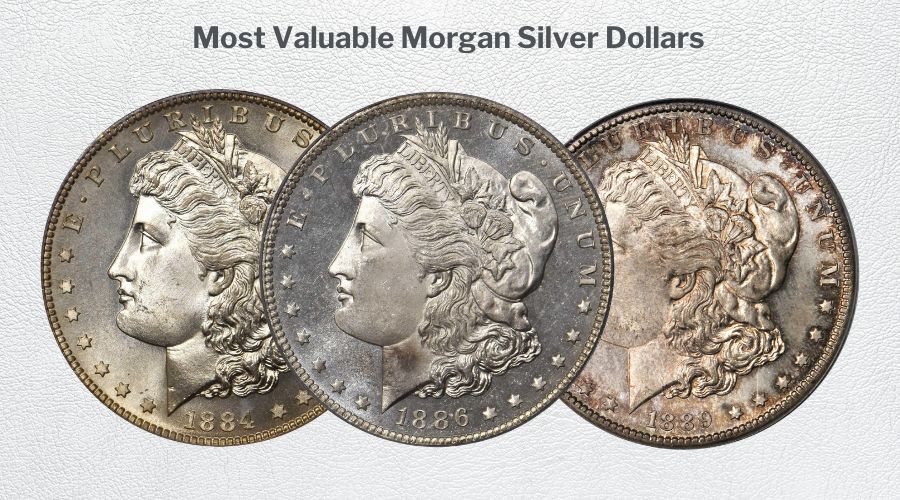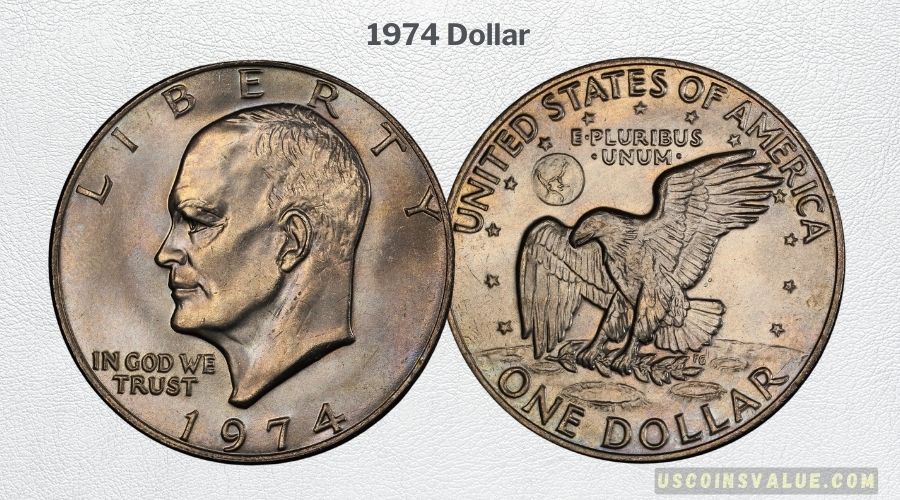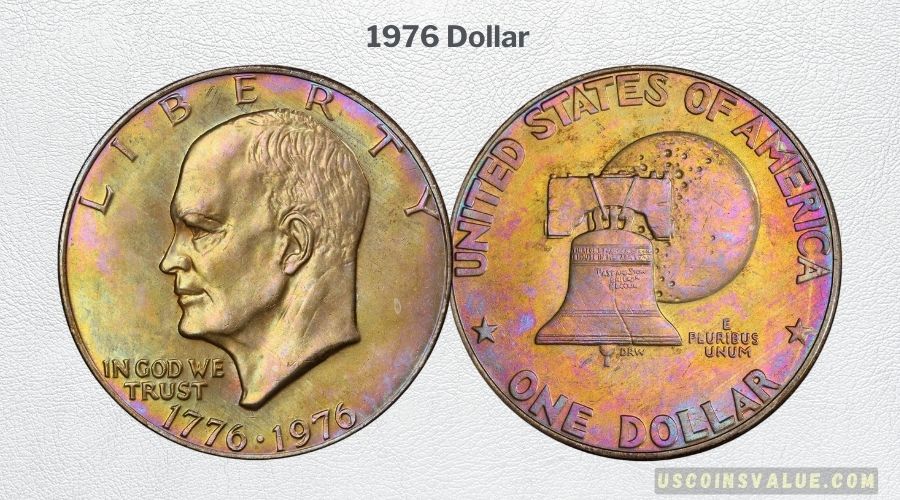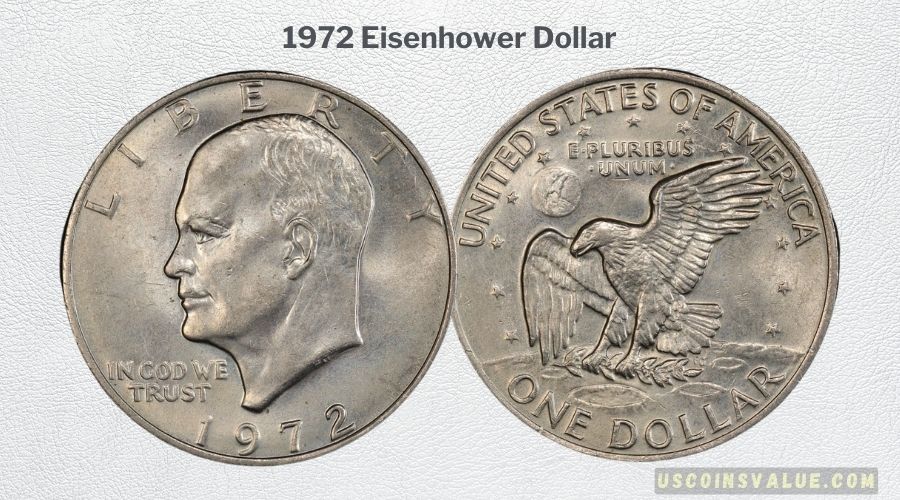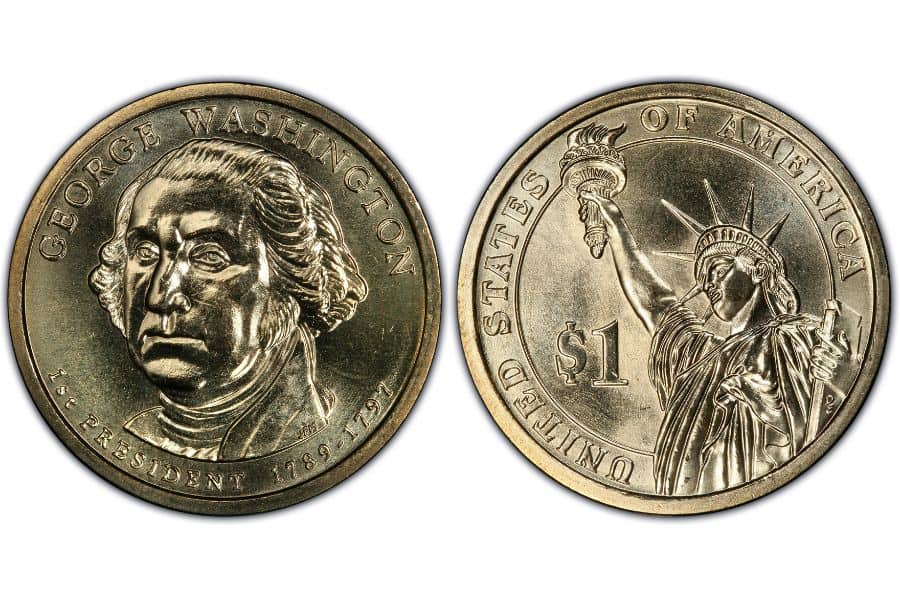The one-dollar coin (also known as the dollar coin) is a U.S. currency with a face value of $1 (100 cents). Minted in the United States since 1794, the coin represents the most basic unit of currency in the United States.
One-dollar coins are still minted to date, but mainly for collectors instead of general circulation.
History
The Coinage Act of 1792 authorized the mintage of a U.S. dollar coin, production of which started in 1794, bringing us the first dollar coin. The coin was initially struck in silver and featured a flowing hair Liberty bust on the obverse and a reverse design portraying a Heraldic eagle standing on a branch.
Below are the different types of dollar coins throughout U.S. history:
- Flowing Hair Dollar: 1794 – 1795
- Draped Bust Dollar: 1795 – 1804
- Liberty Seated Dollar: 1836 – 1873
- Gold Dollar (Liberty Head): 1849 – 1854
- Gold Dollar (Indian Princes, Small Head): 1854 – 1856
- Gold Dollar (Indian Princess, Large Head): 1856 – 1889
- Trade Dollar: 1873 – 1885
- Morgan Dollar: 1878 – 1921
- Peace Dollar: 1921 – 1935
- Eisenhower Dollar: 1971 – 1978
- Susan B. Antony Dollar: 1979 – 1999
- Sacagawea Dollar: 2000 to 2008
- Presidential Dollars: 2007 – 2016, 2020
- Native American Dollar: 2009 to Date
- American Innovation Dollar: 2018 – 2032
Composition
The composition of dollar coins has changed several times over the years.
The first coins from 1794 were made of 90% silver and 10% copper. By the 1970s, the composition was changed to a copper-nickel clad (75 % copper, 25% nickel over a pure copper core).
The early 2000s featured dollar coins with 88.5% copper, 6% zinc, 3.5% manganese, and 2% nickel compositions.
Some Presidential Dollar coins featured the copper-nickel clad composition, while others were made of a copper-zinc clad.
It is also crucial to note that the Mint produced Gold Dollar coins between 1849 and 1889 comprising 90% gold and 10% copper with a mass of 1.672 grams. These true gold coins shouldn’t be confused with the gold-looking Sacagawea, Presidential, and American Innovation one-dollar coins.
Value of U.S. Dollar Coins Today
Dollar coins are some of the most expensive coins in U.S. history. The main reason is their rarity since they were not minted consistently or in high numbers.
For example, the lowest-graded coins from before 1800 will cost you at least several hundred dollars in today’s currency.
Gold Dollar coins are also more expensive. According to R.S. Yeoman’s A Guide Book of United States Coins, the cheapest gold dollar in VF-20 is worth $300 or more.
The most valuable one-dollar coin with the highest auction record is the 1794 Flowing Hair Silver Dollar (Silver Plug variety), worth more than $12,000,000; the 1794 Flowing Hair Silver Dollar, worth more than $5,800,000, and the 1870-S Seated Liberty Silver Dollar valued at more than $2,000,000.
Dive into our detailed coin value blogs where we cover all types of one-dollar coins, including their history, mintage, design, errors, and value in today’s market.

